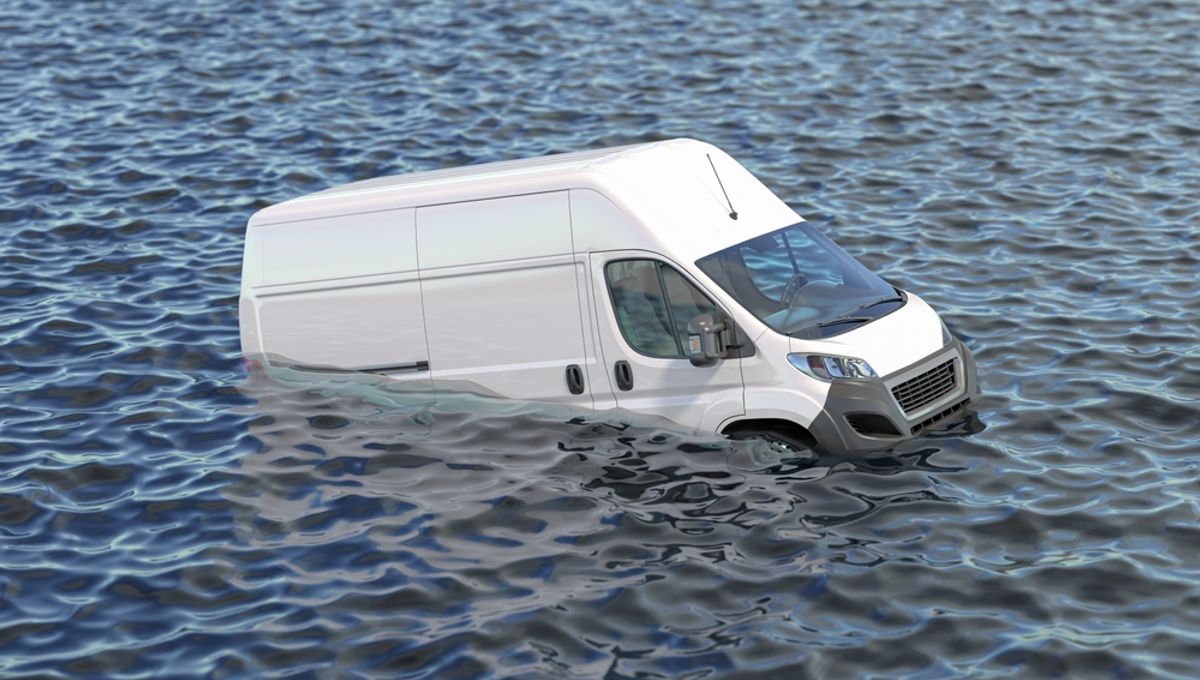
Falling into water inside a car is something that doesn’t happen to a lot of people, but still happens a surprisingly frequent amount: in 2004-2007, 384 traffic fatalities in the US listed drowning as a cause of death. Knowing what to do should it occur can be the difference between life or death, but there’s a huge amount of right and wrong information out there – do you smash the window? Do you wait for the pressure to equalize and then open the door? Spoiler: please do not do the latter.
Let’s see what the science says about the best way to actually survive the ordeal.
How to escape if you are in a sinking car
First, you need to assess the water you have fallen into. According to the AA, if you happen to be stuck in flood water that isn’t going to fill the car up, it’s generally best to stay in the car and wait for help unless you can easily see the bottom and you can reach dry land quickly. If so, feel free to just hop out and get yourself to safety.
However, the tricky part comes when the car begins to fully submerge. At this point, occupants inside are on a timer before the car fills with water and the cabin runs out of oxygen.
Don’t be shocked if the airbags go off, particularly if you hit the water at speed, where the car will register an impact and trigger safety mechanisms (though they may work against you here). Immediately release or cut your seatbelt and those of any occupants.
If the car briefly floats, look to exit the vehicle immediately – don’t sit inside and wait to be in a precarious position. Electric windows will probably still work for a short time and manual windows will still wind down, so try help occupants out of the openings. Don’t try to open the door, as it will likely be too difficult and the car will rapidly sink once open.
How to escape a car underwater
If the worst happens and you find yourself in a fully submerged car, time is of the essence. Do not sit and wait for the car to fill and the pressure to equalize – it’s highly possible you may drown before this happens.
Instead, follow expert Dr. Gordon Giesbrecht’s S.W.O protocol: Seatbelts off, Window open or broken, Out with children going first. Look to break the window with either a sharp instrument or the headrests, by removing them and using the metal prongs to slam against the window. Do not try this against the windshield as they are reinforced, but instead break the driver’s window or one of the passenger windows. From here, swim to the surface.
If all else fails and you cannot break a window, opening the door may be the only option. It may be impossible to open when fully submerged, so waiting until the pressure equalizes here may be the best chance, but it is a slim one.
Stay calm and take a deep breath as the water fills the car – the last bit of air may be located at the rear, as most cars sink front-down. It will take around one to two minutes for the car to fully fill with water, at which point you should attempt to open the door, using feet when necessary. This is a last resort option and often will take too much time, so only use this method when all else fails.
MythBusters once again did a brilliant demonstration of this, with the host admitting defeat before the pressure equalized.
So, if it does happen to you, think fast, remember S.W.O, and try to stay calm if breaking a window fails, because you’re going to need every last second.
All “explainer” articles are confirmed by fact checkers to be correct at time of publishing. Text, images, and links may be edited, removed, or added to at a later date to keep information current.
Source Link: How Common Safety Myths About Submerged Cars May Actually Kill